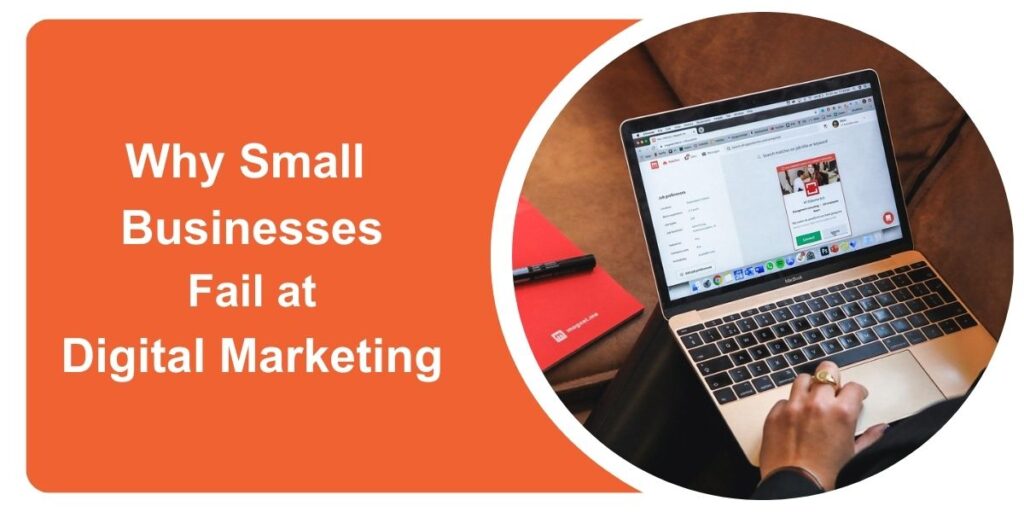
Over the years, I’ve worked with dozens of small businesses that came to me frustrated about their digital marketing. Many of them had already spent thousands of dollars on ads, websites, and campaigns, only to walk away with little to no results.
The truth is, small businesses don’t usually fail at digital marketing because the tools don’t work. They fail because of how they approach it. Here are the most common reasons I’ve seen businesses lose money or get stuck spinning their wheels.
Lack of Marketing Knowledge
I’ve met business owners who create amazing products or services but openly admit they have no idea how to market them. They assume if the product is good enough, it will sell itself.
Others hire someone inexpensive who has only dabbled in marketing but lacks real experience. The result is usually a lot of wasted money on campaigns that aren’t properly targeted or set up.
No Clear Strategy
One of the biggest mistakes is diving in without a plan. I’ve seen businesses run Facebook ads one week, try TikTok the next, and then switch to SEO without ever defining who their target audience is or what makes their business unique.
Without a strategy, digital marketing becomes random experiments. And random rarely leads to results.
Focusing on Visibility Instead of Conversions
Many businesses confuse traffic with success. They get excited about likes, followers, or website visits, but don’t pay attention to whether those numbers actually turn into sales.
I’ve seen websites stuffed with hard “Buy Now” buttons but no real thought put into the customer journey. They assume more traffic equals more leads when in reality it’s about guiding visitors toward conversion.
Inconsistent Effort
Another common issue is inconsistency. Some business owners treat digital marketing as a one-time project. They’ll post a few times, run a campaign for a month, and then stop when results don’t come instantly.
Marketing isn’t set and forget. It’s about building momentum. When businesses hop from one tactic to another or post only when they feel like it, they never give their efforts time to pay off.
Weak Offer or Messaging
Sometimes the problem isn’t the marketing at all, it’s the offer. If a product doesn’t solve a strong enough problem or isn’t positioned clearly, no amount of ad spend will fix it.
I’ve worked with businesses whose websites didn’t explain why someone should choose them. No unique value proposition, no differentiation, just generic messaging that blends in with everyone else. Strong marketing starts with a strong foundation.
Budget Missteps
I’ve seen many businesses underestimate how much digital marketing costs. They expect a couple of hundred dollars in ad spend to produce thousands in sales.
Others spread a tiny budget across too many channels so nothing gets enough traction. Some stop marketing altogether after one failed campaign because they didn’t set aside a reserve for testing and learning.
Poor Measurement and Optimization
A lot of businesses don’t track their results properly. They run ads but don’t set up analytics, so they have no idea what’s working and what isn’t.
I’ve seen websites with no conversion tracking, no A/B testing, and no feedback loop. Without data, decisions are based on guesswork, and guesswork gets expensive fast.
Unrealistic Expectations
One of the toughest conversations I have is resetting expectations. Many people think once they launch ads, the sales will roll in overnight.
When that doesn’t happen, they get discouraged and stop too early. The reality is digital marketing is a long game. It requires patience, testing, and consistent refinement.
Poor Content and Social Media Habits
Content is another area where small businesses slip. Too often, they post only about themselves, such as updates, sales, or what they’re doing, instead of addressing customer needs and questions.
I’ve also seen the same piece of content copied across every platform with no consideration for how audiences behave differently on each channel. That kind of approach usually falls flat.
Internal Roadblocks
Even when businesses hire experts, progress sometimes gets blocked from within. Owners second-guess every decision, override proven strategies, or pile too many unrelated responsibilities on one person.
I’ve worked with clients who wanted results but weren’t willing to let go of control long enough to let the strategy work. That kind of internal friction makes success nearly impossible.
What I’ve Learned Firsthand
Beyond these common challenges, here are a few specific patterns I’ve noticed when auditing small business websites and campaigns:
- Many sites are built on drag-and-drop builders like Wix or Squarespace. While these tools are fine to get started, most of the websites I’ve seen don’t answer basic customer questions or guide visitors effectively.
- Stock images are everywhere. Real photos of the business, the team, or the product are rare and that makes it hard to build trust.
- Paid ads are often launched without understanding the actual budget required to compete in that industry.
- Websites are overloaded with call-to-action buttons but lack conversion rate optimization. Owners assume more buttons equal more leads, but it usually backfires.
- Experts are hired, but their recommendations get watered down or ignored. If you’re going to invest in professional help, you need to let them implement what they know works.
Small businesses don’t fail at digital marketing because digital marketing is broken. They fail because they underestimate the complexity, skip strategy, or approach it with the wrong mindset.
The solution isn’t always spending more money. It’s about having a clear plan, understanding your audience, building a strong offer, and committing for the long term.
When those pieces are in place, digital marketing can be one of the most powerful growth tools a small business will ever use.

I’m a certified digital marketing expert with over 9 years of experience helping businesses grow through SEO, PPC, and content marketing. I focus on creating data-driven strategies that deliver measurable results and long-term growth.


